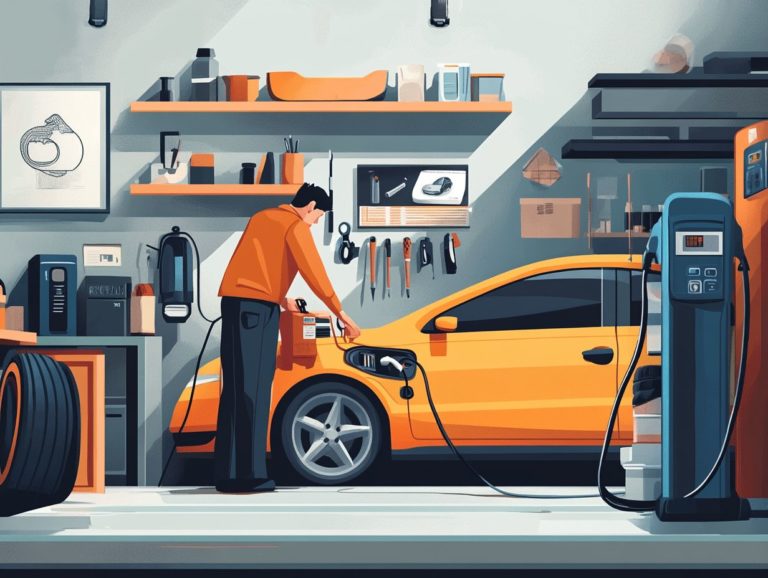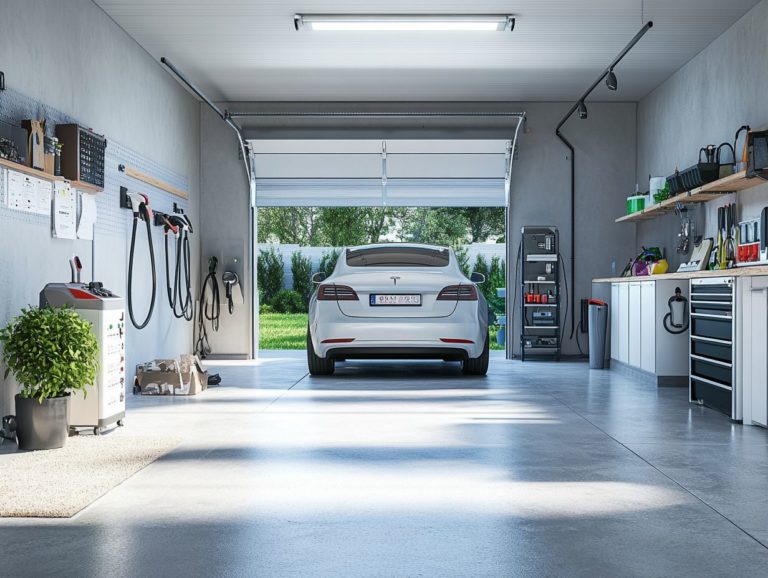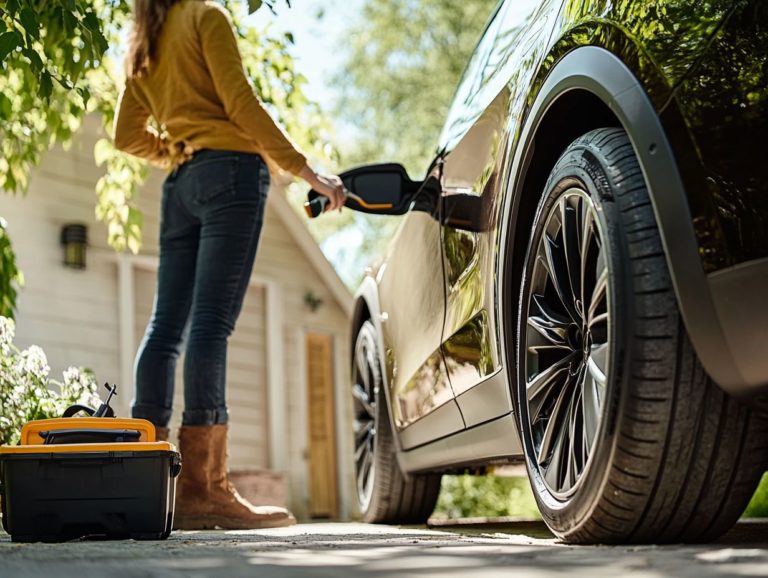keeping your ev ready for emergencies
In today s world, electric vehicles (EVs) are gaining traction. However, this convenience comes with the imperative of preparedness for emergencies.
Whether you re dealing with a power outage, a natural disaster, or an unexpected breakdown, having the right supplies and plans can truly make a difference.
This guide is your go-to resource for stocking essential supplies in your EV emergency kit. It offers tips for regular maintenance and navigating various emergency scenarios.
Stay informed and ready to ensure your journey remains safe and seamless, regardless of the situation that may arise.
Contents
Key Takeaways:
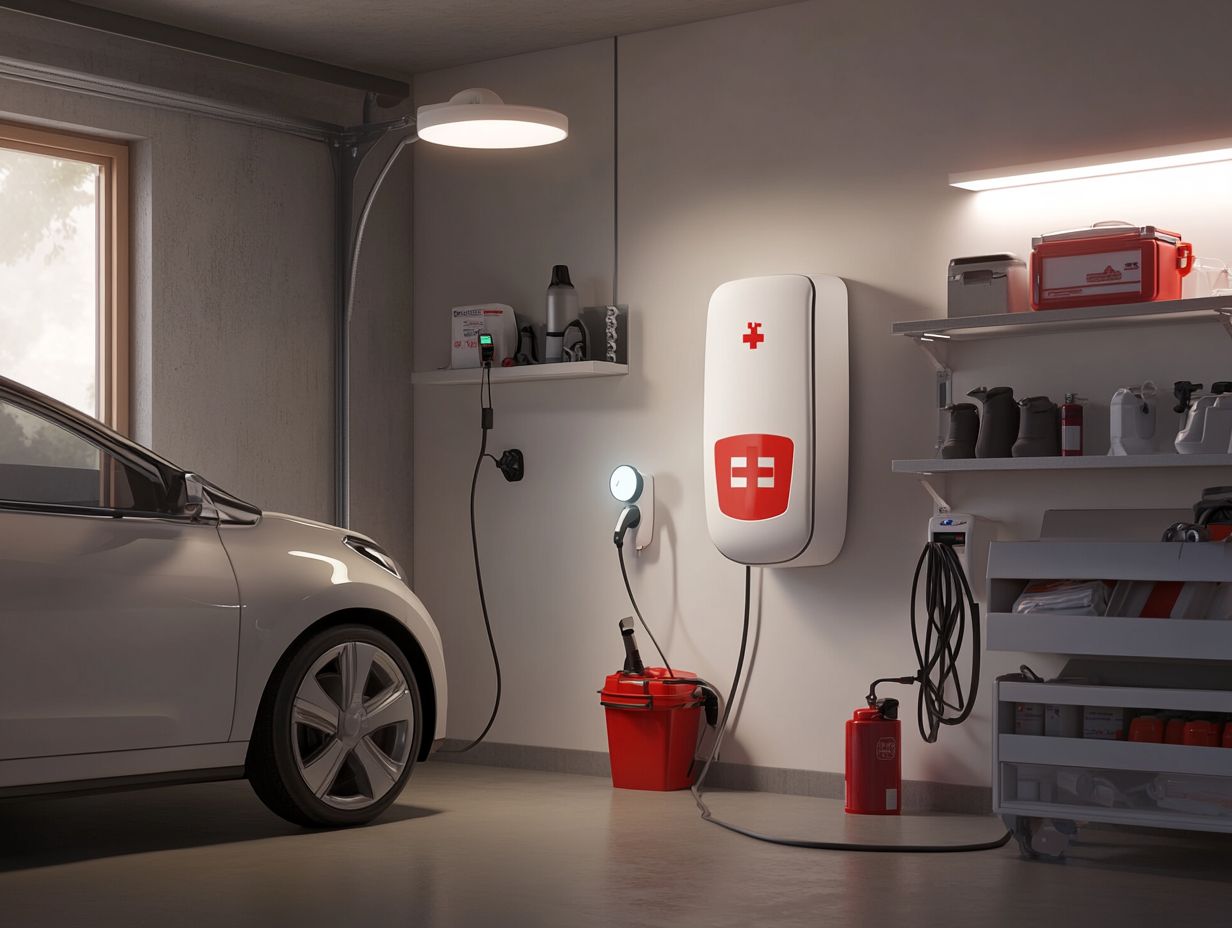
Be prepared! Every EV owner needs an emergency plan and kit.
Essential supplies: Recommended items for your EV emergency kit include a first aid kit, flashlight, and portable charger.
Regular maintenance and checks: Keeping your EV in good condition and preparing your EV for long trips helps you stay safe during emergencies.
Why It’s Important and Who Should Prepare
Preparing for emergencies is essential for you as an electric vehicle (EV) owner, especially in regions that frequently face natural disasters, like Hurricane Ian in Florida.
Understanding the unique challenges tied to lithium-ion batteries like overheating, which can pose safety risks is crucial for ensuring your safety and that of emergency responders.
Vehicle dealers and manufacturers provide vital guidelines to help you mitigate risks associated with battery damage. They ensure your vehicle is primed for emergency situations.
Along with following manufacturer protocols, invest in specialized emergency equipment designed for electric vehicles. Items like safety mats and insulation blankets are helpful for managing battery heat.
Recognizing how extreme weather conditions impact battery performance and vehicle integrity is also important. Storms and floods create unique challenges, making it critical to interact properly with emergency responders.
These responders often require specific training and equipment to handle electric vehicle situations safely. Staying proactive and informed helps you navigate emergencies with more confidence and safety.
Must-Have Supplies for Your EV Emergency Kit
Stocking up on essential supplies boosts your safety and readiness as an electric vehicle (EV) owner during emergencies, including knowing tips for properly storing your EV.
A well-stocked first aid kit, a portable EV charger, and a dependable charging device are crucial items. They can safeguard your well-being and protect your passengers in unforeseen situations, like power outages or severe weather.
Recommended Items for Your EV Emergency Kit
Your electric vehicle emergency kit should encompass a range of essential items, such as an emergency plug, charging port adapter, and tools for tire repair. These ensure you re equipped for roadside emergencies.
It s vital to include a portable battery charger, which provides immediate power in a pinch, as well as a first aid kit for minor injuries during unexpected situations.
Don t overlook a flashlight; it significantly improves visibility during nighttime emergencies. Regarding battery disposal, being aware of local regulations is crucial for safety and environmental protection.
Regularly inspecting your battery plays a critical role in safe driving practices. It can help you avoid potential breakdowns. By outfitting your kit with these essentials, you elevate your preparedness and enhance your safety and peace of mind while on the road.
Preparing Your EV for Emergencies
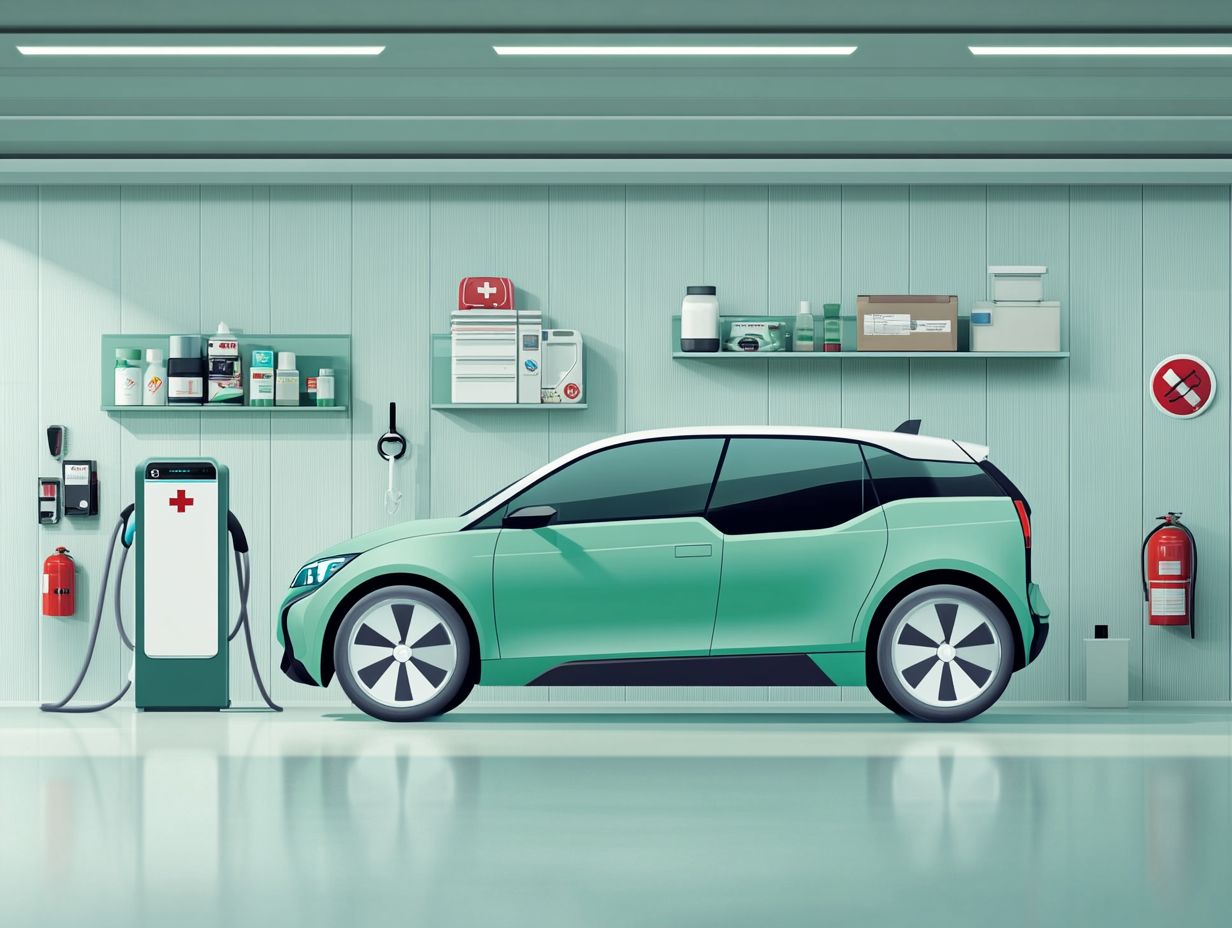
Preparing your electric vehicle (EV) for emergencies requires a thoughtful blend of regular maintenance checks and awareness of how different weather conditions can influence battery longevity and overall vehicle safety. Consider these tips for keeping your EV in top shape to ensure optimal performance.
To ensure you’re ready, confirm that your battery remains in optimal condition, is fully charged at appropriate charging stations, and is stored within recommended temperature ranges.
This proactive approach helps prevent battery damage and minimize emissions, keeping your EV running smoothly when you need it most.
Take a moment today to review your emergency kit and ensure you’re fully prepared!
Regular Maintenance and Checks
Regular maintenance and battery inspections are essential for ensuring the health and safety of your electric vehicle. By conducting these checks, you can prevent issues like battery damage stemming from overcharging or extreme temperatures.
These routine assessments are not just optional; they are vital for catching early signs of potential problems, such as overheating, that could drastically shorten your battery’s lifespan.
By prioritizing preventive measures, you can enhance your battery s health and longevity, ensuring optimal performance for the long haul.
Taking the time for regular evaluations helps you detect irregularities that might lead to dangerous failures in the future, ultimately safeguarding both your vehicle and its occupants.
Frequent inspections and maintenance checks are crucial steps toward delivering a seamless electric driving experience while maximizing efficiency and reliability.
Emergency Charging Options
In emergency situations, knowing your charging options is essential as an electric vehicle owner. Whether it s about locating nearby charging stations or utilizing a portable EV charger for that quick power boost, being prepared is key.
Knowing the various charging solutions available can truly make a difference when a crisis strikes. When unexpected circumstances arise, the ability to swiftly identify nearby charging stations can indeed be a lifesaver. Personal chargers deliver a much-needed surge of power, allowing you to maintain mobility without unnecessary delays.
Familiarity with high-powered charging stations can bolster your confidence in accessing power sources right when you need them. This knowledge gives you the power to navigate not only public infrastructures but also private facilities equipped for emergency charging.
Be ready to act quickly; your mobility depends on it!
Creating an Emergency Plan
Developing a meticulously structured emergency plan is crucial for electric vehicle owners, giving you the power to be prepared for unexpected situations like natural disasters, road trip mishaps, or the essential guide to EV maintenance issues.
This plan ought to encompass a thorough communication and evacuation strategy, as well as a reliable emergency contact list that keeps you in touch with family, friends, and emergency responders.
Don’t wait until it’s too late prepare your emergency plan now!
Identifying Potential Risks and Routes
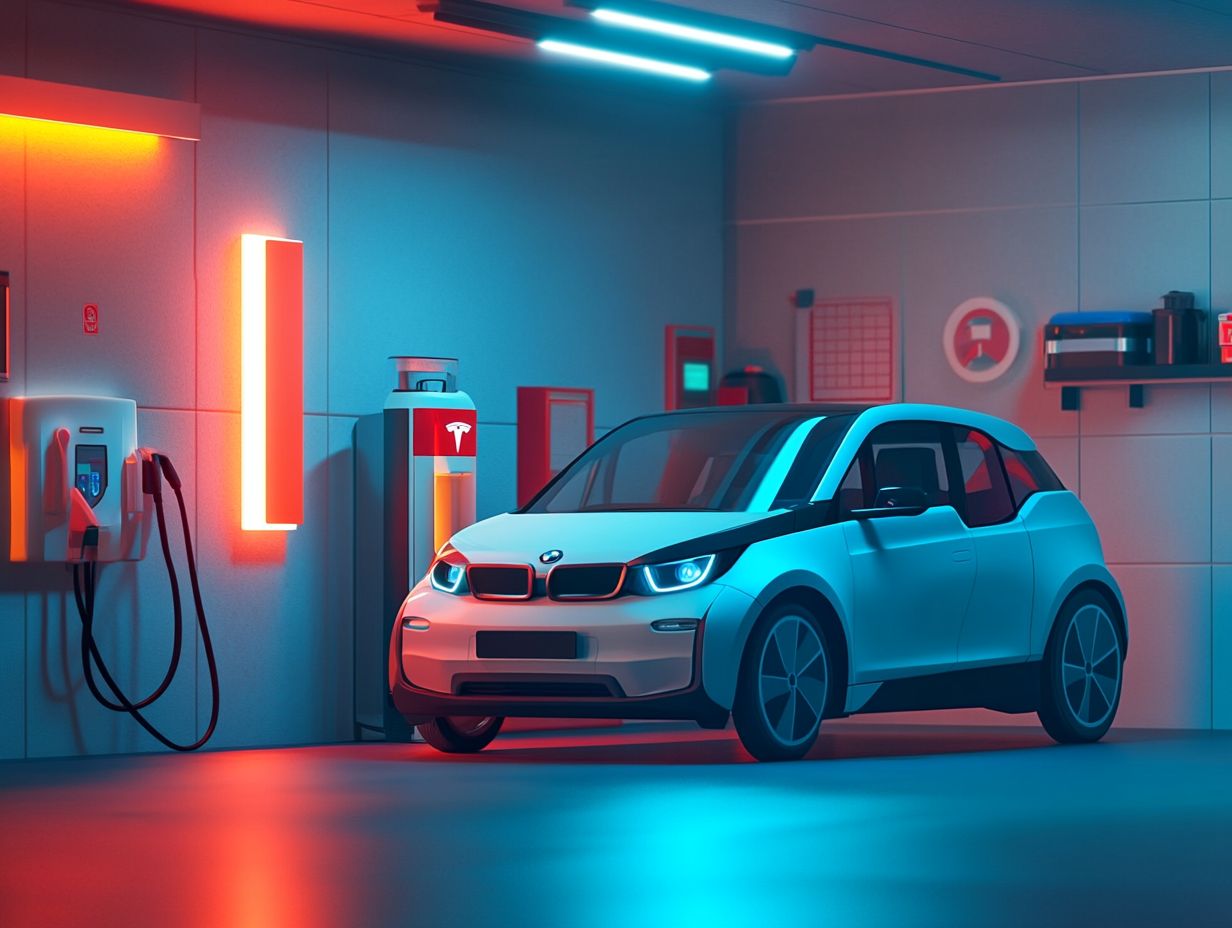
Identifying potential risks and planning alternative routes are essential steps for ensuring your road trip safety, particularly if you own an electric vehicle in areas susceptible to challenging weather conditions like saltwater inundation or severe storms.
Understanding the significance of weather forecasts can significantly enhance your safety by alerting you to potential hazards such as flash flooding or icy roads, which can dramatically impact your vehicle’s handling and battery performance.
Choosing routes away from stormy areas prevents stranding. It also helps with better battery management.
By integrating information about charging infrastructure along your planned routes, you can ensure that your electric vehicle stays powered and ready for safe navigation, underscoring the importance of thorough preparation while on the road.
Communication and Evacuation Plan
An effective communication and evacuation plan is essential for electric vehicle owners, ensuring you stay connected with family, friends, and local emergency services like law enforcement and fire departments during a crisis. This proactive approach is key to facilitating timely responses in emergencies, whether they’re natural disasters or vehicle incidents.
To craft a comprehensive plan, you should compile an emergency contact list that includes not just immediate family, but also neighbors, friends, and essential services. Make sure this list is easily accessible; consider saving it on your mobile device or printing it out to keep in your vehicle.
Adhering to established evacuation procedures is crucial; these protocols typically provide guidance from local authorities on safe routes and emergency shelters, ensuring a smooth process when the pressure is on.
Staying Safe During Emergencies
Staying safe during emergencies is essential for electric vehicle owners, requiring a thorough understanding of your vehicle’s features and best practices for safe driving.
By being aware of potential hazards such as battery leaks and toxic vapors, you can take proactive steps to safeguard your safety and that of your passengers.
Tips for Safe Driving and Handling of Your EV in Emergencies
Safe driving practices and proper handling of your electric vehicle during emergencies can greatly influence the outcome of those situations. This enhances your interaction with emergency responders and helps you get help from roadside services.
In critical moments, it’s crucial to remain calm and focus on tasks that prioritize your safety and that of others on the road.
Keeping your vehicle’s hazard lights flashing is essential. It alerts other drivers to your situation and helps prevent further accidents.
Utilize your car s hands-free system to communicate with emergency services. This ensures you can share your location and any important details without compromising your safety.
Familiarizing yourself with your roadside assistance options ahead of time will streamline the process when you need help. This allows you to swiftly and effectively request towing or services that can start your car when the battery is dead without unnecessary delays.
Common Emergency Scenarios for EV Owners
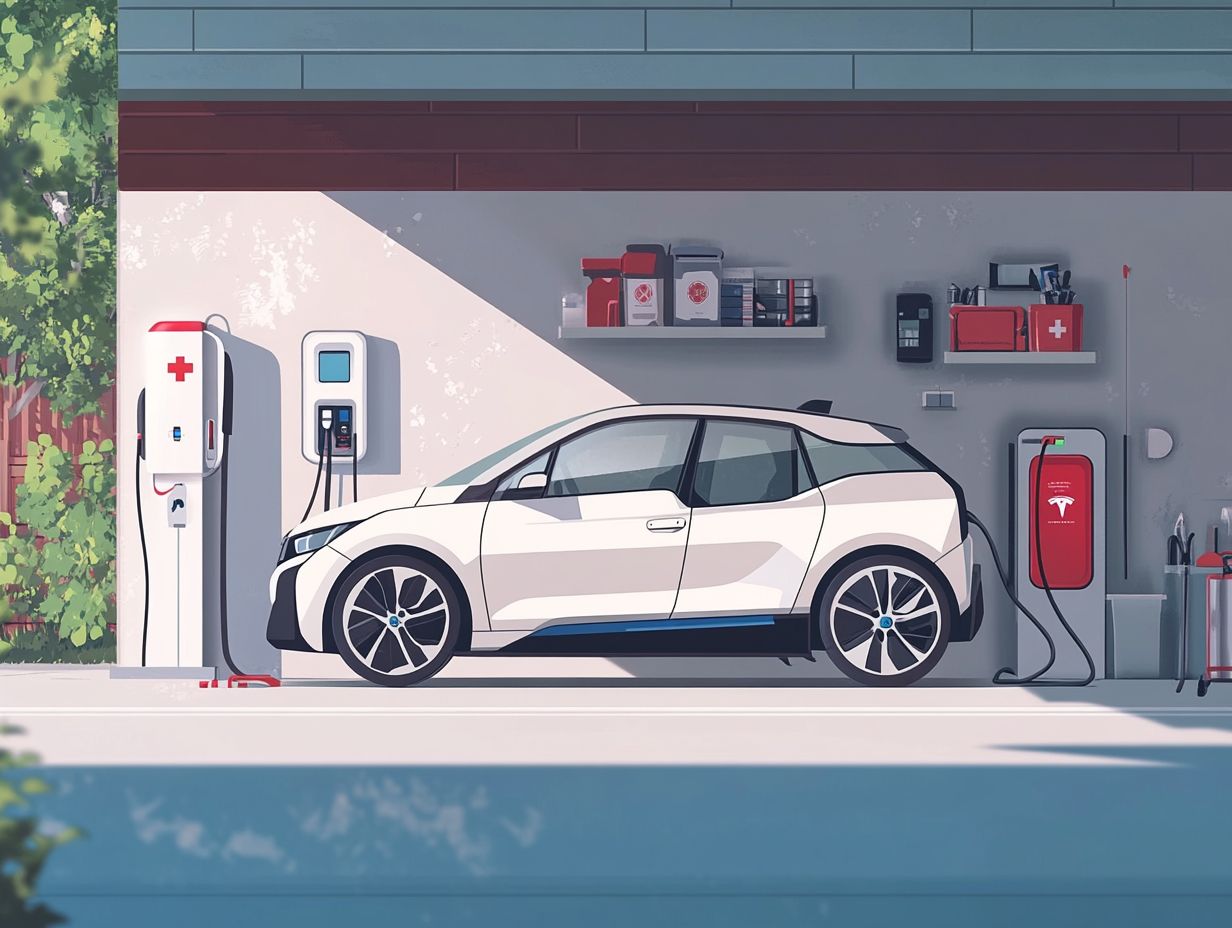
As an electric vehicle owner, you may face a range of common emergency scenarios, such as power outages, natural disasters, or mechanical failures.
These situations demand immediate attention and proactive vehicle maintenance to ensure you avoid battery range issues.
Power Outages, Natural Disasters, and Other Emergencies
Power outages and natural disasters can present significant challenges for electric vehicle owners. Immediate access to battery health information and dependable charging options is vital for vehicle safety.
In these situations, it’s essential to understand how environmental factors influence battery performance. For example, extreme temperatures and inconsistent power availability can lead to a quick depletion of your electric vehicle’s battery charge. Planning ahead is crucial.
Exploring backup power solutions or solar charging options can enhance your resilience during outages. Keeping your vehicle well-maintained is key to ensuring optimal battery health. Knowing how to use mobile apps to monitor battery status can provide you with peace of mind.
By effectively employing these emergency strategies, you can navigate crises with increased confidence and security.
Resources for EV Emergency Preparedness
Leveraging resources such as informative websites and mobile applications can enrich your emergency preparedness as an electric vehicle owner.
These tools offer essential insights on vehicle maintenance, battery recycling, and facilitate connections with emergency responders. This ensures you are well-equipped for any unforeseen circumstances.
Useful Websites and Apps for EV Owners
You ll find a wealth of valuable websites and apps designed for electric vehicle owners. These resources cover everything from battery disposal regulations to maintenance apps that help you monitor your vehicle’s health and find nearby charging stations.
For example, PlugShare keeps you updated on real-time charging station availability. EVgo specializes in fast-charging locations for those urgent moments.
Apps like ChargePoint help you locate chargers while tracking battery health and offering tips for efficient driving.
For emergencies, AAA provides roadside help designed for electric vehicles, ensuring you can quickly access support during battery-related issues.
With these resources, owning an electric vehicle is not just manageable; it s fun!
Frequently Asked Questions
What are some important maintenance tasks for keeping my EV ready for emergencies? Regularly checking tire pressure, keeping the battery charged, and preparing your EV for seasonal changes by ensuring all fluids and brakes are in good condition are essential.
How can I ensure my EV’s battery is always charged in case of an emergency?
Use a home charging station or find public ones. Plan routes to include charging stops to avoid running out of charge.
Is it important to have an emergency kit specifically for my EV?
Yes, include items like a portable EV charger and jumper cables specific to your model.
How often should I check the tire pressure on my EV?
Check tire pressure at least once a month, more often during temperature changes.
What should I do if my EV breaks down during an emergency?
Pull over to a safe spot and turn on your hazard lights. Contact roadside assistance or call a tow truck.
How can I plan ahead to keep my EV ready for emergencies? Regular maintenance, including maintaining your EV’s electrical system, having emergency kits, and knowing nearby charging stations are key.
Explore these tools today and enhance your EV experience!



